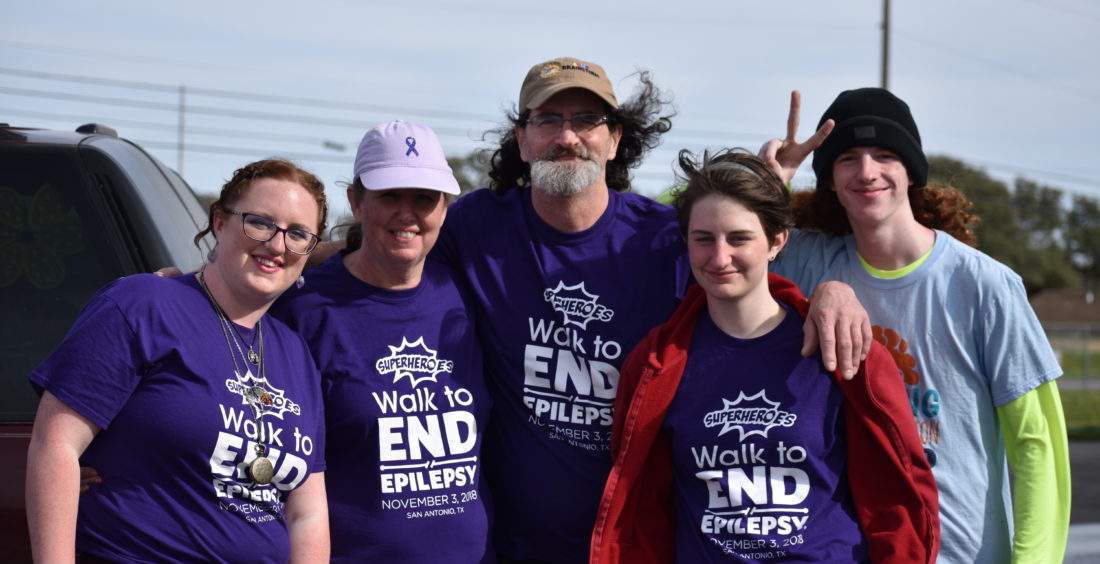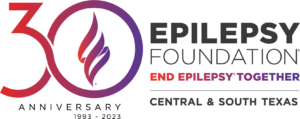
The First Seizure
On January 3, 2018, Kris, a healthy and happy 15 year-old teenager, had his first seizure. We had just returned home from a vacation two days before. He had gone to his room when his father called him to come help clean up the living room. When he didn’t appear after being called a couple of times, his sister looked for him. She found him on his floor with a black eye and scratches on his face. We had no idea what had happened. He wouldn’t respond to our questions and had lost control of his bladder.
We wrapped him up and rushed him to the ER. He was being combative, uncooperative, and couldn’t answer simple questions. On the way to the ER, he started throwing up. We had no idea that was a side affect of a seizure. At that point, we didn’t even know that he had had a seizure. All we knew was that something was wrong.
We get to the ER and they complete their assessment. They did a CT scan and regular tests. All they told us was that there was no bleeding in the brain and that he had had a seizure. It took hours before he even was aware enough to remember what happened. He had been sitting in his chair underneath his loft bed. When his father called him, he jumped up, hitting his head. Hitting his head is what triggered the seizure. They released him from the ER, was put on anti-seizure medicine and was told to follow up with a neurologist.
An Adjustment Period
I did not expect finding a neurologist to be a problem, but it was. He was under 18 years old, so no adult neurologist would see him. They told us he would need to see a pediatric neurologist. However, our insurance only had one pediatric neurologist listed for San Antonio. When I finally got a hold of someone, they told me we needed a referral to get an appointment. How do you get a referral when you have only been seen in the ER? So, I called our insurance company. They called the pediatric neurologist, receiving the the same answer that I got. The first available appointment wasn’t until February, which was longer than we were willing to wait. The insurance found that Dell Children’s Neurology Department in Austin was a part of their approved system. So, we made an appointment with them for the following week.
We picked up the prescription for the anti-seizure medicine and read all of the side-effects. As with any medication, they are scary. Still, the side-effects for anti-seizure medicine especially worried us. We saw the behavioral and mood changes appear almost immediately. We were still trying to comprehend what had happened and now we had these bizarre side effects to deal with. Since the medication was prescribed, we figured it was necessary to have him on it and figured we would just deal with the side effects.
A Setback
On January 6th, Kris started running a high fever. It would get up to 103 and come down when he took Tylenol and go right back up again when the Tylenol wore off. Of course, we had no idea if the fever was a reaction to the medication, some side-effect from the seizure, or if there could be any medication issues with giving Tylenol while taking the anti-seizure medicine. Finally, at about one in the morning, we decided he had to go to the ER again. We couldn’t risk the high fever causing another seizure since we knew that was a possibility.
We took him to a different ER with the discharge papers and a CD of the CT scan from the original ER visit. The fever was due to his catching the flu, probably while he was at the original ER. This ER doctor reviewed the documents and informed us that Kris had a concussion from when he hit his head. She also told us that she had never heard of a neurologist putting someone on anti-seizure medication for one seizure when there was a cause. That was a huge relief since the side-effects were so worrisome. So, we took him home, stopped the anti-seizure medicine, and spent the weekend dealing with the flu having spread through the family.
A Recurrence
Then, on January 11th, Kris had another seizure. We were getting ready for bed and I heard Kris telling his younger sister good night. Then, I heard something else. I called out, “what was that?” His younger sister responded she didn’t know. So, I got up and found Kris face first in the hallway in a full tonic-clonic seizure. It lasted for a couple of minutes. Once again, we bundled him up to take him to the ER. He came around a lot faster this time, so we ended up going back home instead of taking him to the ER. We figured at that point there wasn’t much they would do for him. He was already back to answering questions and responding normally.
We called the neurologist office the next morning. The appointment to see the neurologist had been postponed due to all of the kids having the flu and the fact we thought it was just a one-time occurrence, no big deal. We took him for an EEG that afternoon. We were told the neurologist would read it and get back to us, probably in a couple of days since it was Friday evening. The neurologist read the test and was calling before we even made it home. Kris was throwing both focal (absence) and full (tonic-clonic) seizures. He wanted him back on the anti-seizure (Keppra) medication immediately.
Some Clarity
Kris was still having episodes at times when he seemed out of it and non-responsive. There was even a time when we were out as a family and he wasn’t acting right. He was extremely cold and when we got in the car he immediately fell asleep and it was difficult to wake him up.
We had our first appointment with the neurologist. At that point, we had done some research on the internet regarding seizures. Unfortunately, the neurologist didn’t provide a lot of new information. She was very supportive of telling us to set restrictions that felt comfortable for our family. We told Kris that climbing trees was out, as well as swimming in lakes and rivers without flotation devices, which made Kris very upset. There was also nothing to direct us to a support group or where to get more information. She just did a general checkup, reviewed the “what happened” to Kris during the seizures as we knew it and the appointment came to a natural end. She said that sometimes children can grow out of seizures, but to anticipate him being on the anti-seizure medication for at least two years. An MRI was completed and came back normal.
Our New Routine
We set up a new routine in our household that we would call out to Kris or someone would check on him. On February 1st, he had taken a shower and was in his room getting dressed. His sister went to check on him. He didn’t respond. She kept calling him. He had had another seizure and was leaning against his door. Since no one saw the seizure, we had no idea of exactly how long it had lasted, but we knew it was another tonic-clonic seizure due to the massive headache that hit afterwards. It took him a long time to come around and become coherent. The seizure came on so fast that he only had one foot in his pants. We called the neurologist office in the morning and they increased his dosage of Keppra.
We are now more than a year seizure free. A second EEG was completed in May of 2018 which showed his propensity for tonic-clonic had decreased and his propensity for focal seizures was gone. While all of this sounds great, we know that at any time he could have another seizure. It happens.
A New Home
We had no idea that the Epilepsy Foundation of Central & South Texas even existed until late last year when we saw a sign for the San Antonio Walk to End Epilepsy. We decided to volunteer that day. It was a day that changed our lives. We learned more about epilepsy and found out about a support system that is greatly needed when dealing with this type of condition. We started attending the Transition Program which provides information for families so that their child with epilepsy can begin the process of becoming a self-sufficient adult. The Foundation has provided a wealth of knowledge and support. It has also opened our eyes as to how little is known about seizures, and how common seizures are.
Each person who is affected by seizures has a personal story. There is still more to be learned about who gets them, how they start and how long they last or if they will come back even years after someone has been seizure free. Supporting the Epilepsy Foundation will be a life-long goal for our family. It would have been wonderful to have this support system during the initial stages of coping with our situation. We hope that any other family that has to deal with seizures is able to reach out to the Epilepsy Foundation early in the process to get the support that is so needed during such a stressful time
Sincerely,
Kris’s Father, Mother and Sisters




Comments are closed.